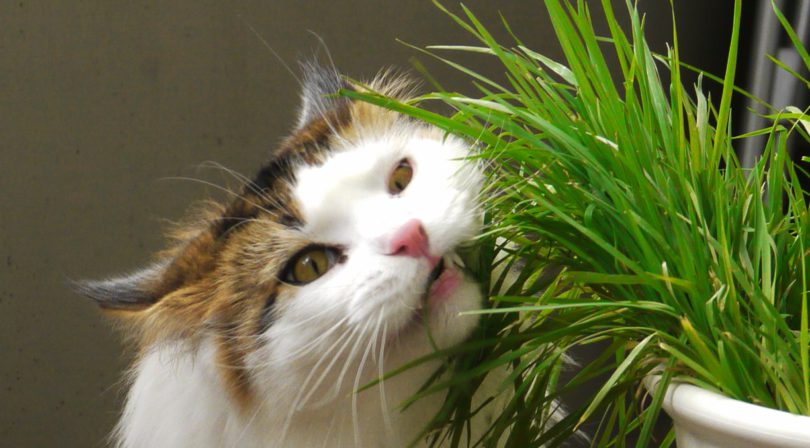You may think cats only want to eat fish or other meats, but the truth is that they also enjoy eating grass. And, it turns out that grass may benefit their diets. Before you go out to your back yard and pull up some grass to plop in your cat’s food bowl, it’s important to understand what exactly cat grass is.
Don’t be confused. Cat grass is not the same thing as catnip. Catnip is a perennial herb that is part of the mint family. Its scientific name is Nepeta cataria and has a chemical compound nepetalactone is what makes cats go crazy for catnip but can actually cause a dangerous reaction. Cat grass, on the other hand, can be beneficial to your cat’s diet.
Cat grass is, as the name implies, grasses, which can safely be nibbled on by cats as part of their leafy greens. It is a combination of rye, barley, wheat or oat seeds that are grown. Cat grass is also very easy to grow inside your own home for a future nutritious addition to your cat’s diet. Cat grass provides needed nutrients and is a natural laxative for your cat. It’s also beneficial in helping rid your cat of hairballs.
Cat grass is made up of a variety and types of grasses. Each has different tastes and nutrients. Each cat will have different preferred tastes. Do a little trial and error with a variety of cat grass types.
Oat grass has a hint of sweetness and is a good source of protein and fiber. Wheatgrass contains vitamins, minerals, and amino acids that are great for your cat’s health and digestion. Ryegrass allows cats to nibble and rest on its durable sprouts. This is great for cats that like to graze. Barley grass is sweet and tender and rich in nutrients and fiber.
Growing cat grass at home will ensure that it is free from toxic chemicals that are often sprayed on outside grass. When you grow it yourself, you can closely monitor it and have the assurance that it is safe. All you will need are a few pots with potting soil.
You could also grow cat grass without dirt, in water. For this, you will want a glass jar or bowl and grow stones.
Once you have successfully grown cat grass at home, you will need to continuously keep seeding and growing. One way to always ensure you have cat grass available is to start a few plants a few days apart. This will help a few pots sprout followed by the others sprouting a few days later. Typically, most cat grass will live for about ten to 21 days.
While you may be Vegan or vegetarian, keep in mind that your cat still is a carnivore. So, while supplementing your cat’s diet with cat grass is a good idea, make sure it’s not their only source of nutrition.

